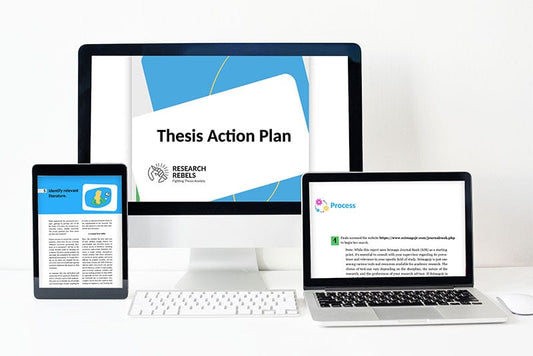Creating an Effective Thesis Outline: A Step-by-Step Guide

Creating a thesis outline might seem like a big job, but it makes the whole writing process a lot easier. This guide will show you each step to make a good thesis outline. From understanding why you need an outline to avoiding common mistakes, this article will help you stay organized and focused. By following these steps, you can make a strong outline that will guide your research and writing.
Key Takeaways
- A thesis outline helps you organize your thoughts and makes the writing process smoother.
- Start with initial research to find key themes and questions for your thesis.
- Structure your outline logically to ensure a clear flow of ideas.
- Revise your outline regularly to make sure it stays relevant and focused.
- Avoid common pitfalls like overloading with information or ignoring feedback.
Understanding the Purpose of a Thesis Outline
Creating a thesis outline is a crucial step in the academic writing process. It serves as a roadmap for your research, helping you organize your thoughts and structure your work logically. This section will delve into the purpose of a thesis outline, its importance in academic writing, and how it guides the research process.
Preliminary Steps Before Creating a Thesis Outline

Before diving into the creation of your thesis outline, it's essential to take some preliminary steps. These steps will lay a solid foundation for your research and ensure that your outline is both comprehensive and effective.
Structuring Your Thesis Outline
Creating a well-organized thesis outline is crucial for a successful thesis. It helps you structure your thoughts and ensures a logical flow of information. Here are the key steps to structuring your thesis outline effectively:
Choosing the Right Format
Selecting the appropriate format for your thesis outline is the first step. Common formats include alphanumeric, decimal, and full-sentence outlines. Choose a format that best suits your research and writing style. This decision will guide the organization of your major sections and sub-sections.
Organizing Major Sections
Divide your thesis into major sections such as the introduction, literature review, methodology, results, discussion, and conclusion. Each section should have a clear purpose and contribute to your overall thesis argument. Use headings and subheadings to break down each section into manageable parts.
Ensuring Logical Flow
A logical flow is essential for maintaining the reader's interest and understanding. Arrange your sections and sub-sections in a way that naturally progresses from one idea to the next. This will help you build a coherent argument and make your thesis more persuasive.
By following these steps, you can create a structured and effective thesis outline that will serve as a roadmap for your research and writing process.
Developing the Introduction Section
Crafting a Compelling Opening
Your introduction should grab the reader's attention right from the start. Use a hook, such as a surprising fact or a thought-provoking question, to draw them in. This section sets the stage for your entire thesis, so make it engaging and relevant.
Presenting the Research Question
Clearly state the research question your thesis aims to answer. This question will guide your entire study and keep you focused. Make sure it is specific and researchable.
Outlining the Scope and Objectives
Provide an overview of the scope of your research. Explain what you will cover and what you will not. This helps set clear boundaries for your study. Additionally, outline the main objectives you aim to achieve with your research. Setting clear objectives will help you stay on track and ensure your research is focused and relevant.
Outlining the Literature Review

Summarizing Existing Research
When outlining your literature review, start by summarizing the existing research related to your topic. This involves gathering and synthesizing information from various sources, such as books, journal articles, and online databases. A well-summarized literature review provides a comprehensive overview of what has been done in your field and highlights the key findings and methodologies used by other researchers.
Identifying Research Gaps
After summarizing the existing research, the next step is to identify the gaps in the literature. These gaps represent areas where further research is needed and can help you position your study within the broader academic context. Look for questions that have not been answered or areas that have not been explored in depth. Identifying these gaps will not only justify the need for your research but also guide your research questions and objectives.
Establishing Theoretical Frameworks
Finally, establish the theoretical frameworks that will underpin your study. This involves selecting and discussing the theories and models that are relevant to your research topic. The theoretical framework provides a foundation for your study and helps to explain the relationships between different variables. By clearly outlining the theoretical frameworks, you can ensure that your research is grounded in established knowledge and contributes to the ongoing academic discourse.
Detailing the Methodology
Selecting Research Methods
Choosing the right research methods is crucial for the success of your thesis. Start by deciding whether your study will be qualitative, quantitative, or a mix of both. Qualitative methods often include interviews and observations, while quantitative methods might involve surveys and experiments. Your choice should align with your research objectives and the type of data you need to collect.
Justifying Methodological Choices
Once you have selected your methods, it's important to justify why these methods are appropriate for your study. Explain how they will help you answer your research questions and achieve your objectives. This step is vital for gaining approval from stakeholders and ensuring the success of your project.
Describing Data Collection and Analysis
Detail the process of data collection and analysis. Describe the tools and techniques you will use, such as surveys, interviews, or software for data analysis. Make sure to explain how you will ensure the reliability and validity of your data. This section should provide a clear roadmap of how you will gather and interpret your data, ensuring that your research is both credible and replicable.
Presenting Research Findings
Organizing Data Logically
When presenting your research findings, it's crucial to organize your data in a logical manner. This can be done by structuring your findings around key questions, hypotheses, or the overall structure of your study. Clear organization helps your audience understand your results without confusion. Consider using tables to present quantitative data succinctly.
Highlighting Key Results
Focus on the most significant results of your research. Highlight these key findings to ensure they stand out to your readers. This not only emphasizes the importance of your work but also makes it easier for others to grasp the core contributions of your study. Remember, clarity is essential in effective communication.
Using Visual Aids Effectively
Visual aids such as charts, graphs, and tables can greatly enhance the presentation of your research findings. They provide a visual representation of your data, making complex information more accessible. Ensure that your visual aids are well-labeled and directly related to the findings you are discussing. This will help in stripping the dread from data interpretation for your audience.
Analyzing and Discussing Results
Interpreting Findings
When you interpret your findings, you need to connect your analysis to your research questions and hypotheses. This involves making sense of statistical significance and drawing meaningful conclusions. Interpreting your findings helps you understand the broader implications of your research and how it contributes to the existing body of knowledge.
Comparing with Existing Literature
To provide context for your results, compare them with similar studies mentioned in your literature review. Highlight whether your findings align with or differ from previous research. This comparison can help validate your results and show how your work fits into the larger academic conversation.
Discussing Implications
Discuss the broader implications of your findings. Consider how they impact your field of study and what they mean for future research. This section should also address any limitations of your study and suggest areas for further investigation. By doing so, you demonstrate the significance of your research and its potential to influence future work.
Concluding Your Thesis
Summarizing Key Points
In the conclusion, you should summarize the key points of your research. This involves revisiting the main arguments and findings discussed in your thesis. By doing so, you provide a clear and concise overview of your work, ensuring that the reader understands the significance of your research.
Restating the Thesis Statement
Restate your thesis statement in a fresh way, reflecting on how your research has supported or challenged it. This is crucial for reinforcing the main idea of your thesis and demonstrating how your work contributes to the broader field of study. Remember, a well-restated thesis can leave a lasting impression on your readers.
Suggesting Areas for Future Research
Finally, suggest areas for future research. Identify any gaps or limitations in your study and propose how future research can address these issues. This not only highlights the importance of your work but also encourages further exploration and development in your field.
Revising and Refining the Outline
Seeking Feedback
Before finalizing your thesis outline, it's crucial to seek feedback from your advisor or peers. They can provide valuable insights and identify areas that may need improvement. Don't hesitate to ask for their opinions on the structure and content of your outline. This step ensures that your outline is clear and logical.
Making Necessary Adjustments
After receiving feedback, take the time to make necessary adjustments. This may involve reorganizing sections, adding or removing content, or clarifying certain points. A reverse outline can be particularly helpful in this stage. It involves outlining an existing draft to assess its structure and coherence. This technique allows you to see if your ideas flow logically and if any sections need further development.
Ensuring Cohesion and Coherence
Finally, ensure that your outline is cohesive and coherent. Each section should connect logically to the next, and your main points should be clearly articulated. Use a checklist to verify that your outline meets these criteria. This step is essential for creating a well-structured thesis that effectively communicates your research findings.
Common Pitfalls to Avoid
Overloading with Information
One common mistake is trying to include too much information. This can make your thesis overwhelming and difficult to follow. Focus on the most relevant data and arguments to support your thesis statement. Remember, quality over quantity is key.
Lack of Clear Focus
A thesis that lacks a clear focus can confuse readers and weaken your argument. Make sure your thesis statement is specific and that each section of your outline directly supports it. Staying focused will help you create a more compelling and coherent thesis.
Ignoring Feedback
Feedback from advisors and peers is invaluable. Ignoring it can lead to missed opportunities for improvement. Take the time to consider and incorporate constructive criticism. This will not only enhance the quality of your thesis but also help you grow as a researcher.
Writing a thesis can be tricky, and many students fall into common traps. Don't let stress and confusion hold you back. Our step-by-step Thesis Action Plan is here to guide you through every stage. Ready to make your thesis journey smoother? Visit our website to learn more and get started today!
Conclusion
Creating an effective thesis outline is a vital step in the thesis writing process. It helps you organize your thoughts, stay focused, and ensure that your research is thorough and well-structured. By breaking down your thesis into manageable sections, you can tackle each part with confidence and clarity. Remember, a well-crafted outline not only makes the writing process smoother but also enhances the overall quality of your thesis. Stay dedicated, seek guidance when needed, and take pride in your progress. With a solid outline, you are well on your way to producing a compelling and academically rigorous thesis.
Frequently Asked Questions
Why do I need a thesis outline?
A thesis outline helps you organize your ideas and ensures your writing is structured and focused. It breaks your project into smaller, manageable parts, making the writing process faster and less stressful.
What should I do before creating a thesis outline?
Before creating a thesis outline, conduct initial research, identify key themes and questions, and set clear objectives for your study.
How should I structure my thesis outline?
Your thesis outline should include the major sections: introduction, literature review, methodology, research findings, discussion, and conclusion. Ensure each section flows logically into the next.
What is the best way to start the introduction section?
Start your introduction with a compelling opening, present your research question, and outline the scope and objectives of your thesis.
How do I organize the literature review?
Organize your literature review by summarizing existing research, identifying research gaps, and establishing theoretical frameworks relevant to your study.
What should I include in the methodology section?
In the methodology section, describe your research methods, justify your methodological choices, and explain how you collected and analyzed your data.
How can I present my research findings effectively?
Present your research findings by organizing data logically, highlighting key results, and using visual aids like charts and graphs to make the information clear and engaging.
What should I do if I get stuck while writing my thesis?
If you get stuck, take a break, seek feedback from peers or advisors, and revisit your outline to ensure your thesis remains focused and coherent.
Creating an Effective Thesis Outline: A Step-by-Step Guide

Creating a thesis outline might seem like a big job, but it makes the whole writing process a lot easier. This guide will show you each step to make a good thesis outline. From understanding why you need an outline to avoiding common mistakes, this article will help you stay organized and focused. By following these steps, you can make a strong outline that will guide your research and writing.
Key Takeaways
- A thesis outline helps you organize your thoughts and makes the writing process smoother.
- Start with initial research to find key themes and questions for your thesis.
- Structure your outline logically to ensure a clear flow of ideas.
- Revise your outline regularly to make sure it stays relevant and focused.
- Avoid common pitfalls like overloading with information or ignoring feedback.
Understanding the Purpose of a Thesis Outline
Creating a thesis outline is a crucial step in the academic writing process. It serves as a roadmap for your research, helping you organize your thoughts and structure your work logically. This section will delve into the purpose of a thesis outline, its importance in academic writing, and how it guides the research process.
Preliminary Steps Before Creating a Thesis Outline

Before diving into the creation of your thesis outline, it's essential to take some preliminary steps. These steps will lay a solid foundation for your research and ensure that your outline is both comprehensive and effective.
Structuring Your Thesis Outline
Creating a well-organized thesis outline is crucial for a successful thesis. It helps you structure your thoughts and ensures a logical flow of information. Here are the key steps to structuring your thesis outline effectively:
Choosing the Right Format
Selecting the appropriate format for your thesis outline is the first step. Common formats include alphanumeric, decimal, and full-sentence outlines. Choose a format that best suits your research and writing style. This decision will guide the organization of your major sections and sub-sections.
Organizing Major Sections
Divide your thesis into major sections such as the introduction, literature review, methodology, results, discussion, and conclusion. Each section should have a clear purpose and contribute to your overall thesis argument. Use headings and subheadings to break down each section into manageable parts.
Ensuring Logical Flow
A logical flow is essential for maintaining the reader's interest and understanding. Arrange your sections and sub-sections in a way that naturally progresses from one idea to the next. This will help you build a coherent argument and make your thesis more persuasive.
By following these steps, you can create a structured and effective thesis outline that will serve as a roadmap for your research and writing process.
Developing the Introduction Section
Crafting a Compelling Opening
Your introduction should grab the reader's attention right from the start. Use a hook, such as a surprising fact or a thought-provoking question, to draw them in. This section sets the stage for your entire thesis, so make it engaging and relevant.
Presenting the Research Question
Clearly state the research question your thesis aims to answer. This question will guide your entire study and keep you focused. Make sure it is specific and researchable.
Outlining the Scope and Objectives
Provide an overview of the scope of your research. Explain what you will cover and what you will not. This helps set clear boundaries for your study. Additionally, outline the main objectives you aim to achieve with your research. Setting clear objectives will help you stay on track and ensure your research is focused and relevant.
Outlining the Literature Review

Summarizing Existing Research
When outlining your literature review, start by summarizing the existing research related to your topic. This involves gathering and synthesizing information from various sources, such as books, journal articles, and online databases. A well-summarized literature review provides a comprehensive overview of what has been done in your field and highlights the key findings and methodologies used by other researchers.
Identifying Research Gaps
After summarizing the existing research, the next step is to identify the gaps in the literature. These gaps represent areas where further research is needed and can help you position your study within the broader academic context. Look for questions that have not been answered or areas that have not been explored in depth. Identifying these gaps will not only justify the need for your research but also guide your research questions and objectives.
Establishing Theoretical Frameworks
Finally, establish the theoretical frameworks that will underpin your study. This involves selecting and discussing the theories and models that are relevant to your research topic. The theoretical framework provides a foundation for your study and helps to explain the relationships between different variables. By clearly outlining the theoretical frameworks, you can ensure that your research is grounded in established knowledge and contributes to the ongoing academic discourse.
Detailing the Methodology
Selecting Research Methods
Choosing the right research methods is crucial for the success of your thesis. Start by deciding whether your study will be qualitative, quantitative, or a mix of both. Qualitative methods often include interviews and observations, while quantitative methods might involve surveys and experiments. Your choice should align with your research objectives and the type of data you need to collect.
Justifying Methodological Choices
Once you have selected your methods, it's important to justify why these methods are appropriate for your study. Explain how they will help you answer your research questions and achieve your objectives. This step is vital for gaining approval from stakeholders and ensuring the success of your project.
Describing Data Collection and Analysis
Detail the process of data collection and analysis. Describe the tools and techniques you will use, such as surveys, interviews, or software for data analysis. Make sure to explain how you will ensure the reliability and validity of your data. This section should provide a clear roadmap of how you will gather and interpret your data, ensuring that your research is both credible and replicable.
Presenting Research Findings
Organizing Data Logically
When presenting your research findings, it's crucial to organize your data in a logical manner. This can be done by structuring your findings around key questions, hypotheses, or the overall structure of your study. Clear organization helps your audience understand your results without confusion. Consider using tables to present quantitative data succinctly.
Highlighting Key Results
Focus on the most significant results of your research. Highlight these key findings to ensure they stand out to your readers. This not only emphasizes the importance of your work but also makes it easier for others to grasp the core contributions of your study. Remember, clarity is essential in effective communication.
Using Visual Aids Effectively
Visual aids such as charts, graphs, and tables can greatly enhance the presentation of your research findings. They provide a visual representation of your data, making complex information more accessible. Ensure that your visual aids are well-labeled and directly related to the findings you are discussing. This will help in stripping the dread from data interpretation for your audience.
Analyzing and Discussing Results
Interpreting Findings
When you interpret your findings, you need to connect your analysis to your research questions and hypotheses. This involves making sense of statistical significance and drawing meaningful conclusions. Interpreting your findings helps you understand the broader implications of your research and how it contributes to the existing body of knowledge.
Comparing with Existing Literature
To provide context for your results, compare them with similar studies mentioned in your literature review. Highlight whether your findings align with or differ from previous research. This comparison can help validate your results and show how your work fits into the larger academic conversation.
Discussing Implications
Discuss the broader implications of your findings. Consider how they impact your field of study and what they mean for future research. This section should also address any limitations of your study and suggest areas for further investigation. By doing so, you demonstrate the significance of your research and its potential to influence future work.
Concluding Your Thesis
Summarizing Key Points
In the conclusion, you should summarize the key points of your research. This involves revisiting the main arguments and findings discussed in your thesis. By doing so, you provide a clear and concise overview of your work, ensuring that the reader understands the significance of your research.
Restating the Thesis Statement
Restate your thesis statement in a fresh way, reflecting on how your research has supported or challenged it. This is crucial for reinforcing the main idea of your thesis and demonstrating how your work contributes to the broader field of study. Remember, a well-restated thesis can leave a lasting impression on your readers.
Suggesting Areas for Future Research
Finally, suggest areas for future research. Identify any gaps or limitations in your study and propose how future research can address these issues. This not only highlights the importance of your work but also encourages further exploration and development in your field.
Revising and Refining the Outline
Seeking Feedback
Before finalizing your thesis outline, it's crucial to seek feedback from your advisor or peers. They can provide valuable insights and identify areas that may need improvement. Don't hesitate to ask for their opinions on the structure and content of your outline. This step ensures that your outline is clear and logical.
Making Necessary Adjustments
After receiving feedback, take the time to make necessary adjustments. This may involve reorganizing sections, adding or removing content, or clarifying certain points. A reverse outline can be particularly helpful in this stage. It involves outlining an existing draft to assess its structure and coherence. This technique allows you to see if your ideas flow logically and if any sections need further development.
Ensuring Cohesion and Coherence
Finally, ensure that your outline is cohesive and coherent. Each section should connect logically to the next, and your main points should be clearly articulated. Use a checklist to verify that your outline meets these criteria. This step is essential for creating a well-structured thesis that effectively communicates your research findings.
Common Pitfalls to Avoid
Overloading with Information
One common mistake is trying to include too much information. This can make your thesis overwhelming and difficult to follow. Focus on the most relevant data and arguments to support your thesis statement. Remember, quality over quantity is key.
Lack of Clear Focus
A thesis that lacks a clear focus can confuse readers and weaken your argument. Make sure your thesis statement is specific and that each section of your outline directly supports it. Staying focused will help you create a more compelling and coherent thesis.
Ignoring Feedback
Feedback from advisors and peers is invaluable. Ignoring it can lead to missed opportunities for improvement. Take the time to consider and incorporate constructive criticism. This will not only enhance the quality of your thesis but also help you grow as a researcher.
Writing a thesis can be tricky, and many students fall into common traps. Don't let stress and confusion hold you back. Our step-by-step Thesis Action Plan is here to guide you through every stage. Ready to make your thesis journey smoother? Visit our website to learn more and get started today!
Conclusion
Creating an effective thesis outline is a vital step in the thesis writing process. It helps you organize your thoughts, stay focused, and ensure that your research is thorough and well-structured. By breaking down your thesis into manageable sections, you can tackle each part with confidence and clarity. Remember, a well-crafted outline not only makes the writing process smoother but also enhances the overall quality of your thesis. Stay dedicated, seek guidance when needed, and take pride in your progress. With a solid outline, you are well on your way to producing a compelling and academically rigorous thesis.
Frequently Asked Questions
Why do I need a thesis outline?
A thesis outline helps you organize your ideas and ensures your writing is structured and focused. It breaks your project into smaller, manageable parts, making the writing process faster and less stressful.
What should I do before creating a thesis outline?
Before creating a thesis outline, conduct initial research, identify key themes and questions, and set clear objectives for your study.
How should I structure my thesis outline?
Your thesis outline should include the major sections: introduction, literature review, methodology, research findings, discussion, and conclusion. Ensure each section flows logically into the next.
What is the best way to start the introduction section?
Start your introduction with a compelling opening, present your research question, and outline the scope and objectives of your thesis.
How do I organize the literature review?
Organize your literature review by summarizing existing research, identifying research gaps, and establishing theoretical frameworks relevant to your study.
What should I include in the methodology section?
In the methodology section, describe your research methods, justify your methodological choices, and explain how you collected and analyzed your data.
How can I present my research findings effectively?
Present your research findings by organizing data logically, highlighting key results, and using visual aids like charts and graphs to make the information clear and engaging.
What should I do if I get stuck while writing my thesis?
If you get stuck, take a break, seek feedback from peers or advisors, and revisit your outline to ensure your thesis remains focused and coherent.
Creating an Effective Thesis Outline: A Step-by-Step Guide

Creating a thesis outline might seem like a big job, but it makes the whole writing process a lot easier. This guide will show you each step to make a good thesis outline. From understanding why you need an outline to avoiding common mistakes, this article will help you stay organized and focused. By following these steps, you can make a strong outline that will guide your research and writing.
Key Takeaways
- A thesis outline helps you organize your thoughts and makes the writing process smoother.
- Start with initial research to find key themes and questions for your thesis.
- Structure your outline logically to ensure a clear flow of ideas.
- Revise your outline regularly to make sure it stays relevant and focused.
- Avoid common pitfalls like overloading with information or ignoring feedback.
Understanding the Purpose of a Thesis Outline
Creating a thesis outline is a crucial step in the academic writing process. It serves as a roadmap for your research, helping you organize your thoughts and structure your work logically. This section will delve into the purpose of a thesis outline, its importance in academic writing, and how it guides the research process.
Preliminary Steps Before Creating a Thesis Outline

Before diving into the creation of your thesis outline, it's essential to take some preliminary steps. These steps will lay a solid foundation for your research and ensure that your outline is both comprehensive and effective.
Structuring Your Thesis Outline
Creating a well-organized thesis outline is crucial for a successful thesis. It helps you structure your thoughts and ensures a logical flow of information. Here are the key steps to structuring your thesis outline effectively:
Choosing the Right Format
Selecting the appropriate format for your thesis outline is the first step. Common formats include alphanumeric, decimal, and full-sentence outlines. Choose a format that best suits your research and writing style. This decision will guide the organization of your major sections and sub-sections.
Organizing Major Sections
Divide your thesis into major sections such as the introduction, literature review, methodology, results, discussion, and conclusion. Each section should have a clear purpose and contribute to your overall thesis argument. Use headings and subheadings to break down each section into manageable parts.
Ensuring Logical Flow
A logical flow is essential for maintaining the reader's interest and understanding. Arrange your sections and sub-sections in a way that naturally progresses from one idea to the next. This will help you build a coherent argument and make your thesis more persuasive.
By following these steps, you can create a structured and effective thesis outline that will serve as a roadmap for your research and writing process.
Developing the Introduction Section
Crafting a Compelling Opening
Your introduction should grab the reader's attention right from the start. Use a hook, such as a surprising fact or a thought-provoking question, to draw them in. This section sets the stage for your entire thesis, so make it engaging and relevant.
Presenting the Research Question
Clearly state the research question your thesis aims to answer. This question will guide your entire study and keep you focused. Make sure it is specific and researchable.
Outlining the Scope and Objectives
Provide an overview of the scope of your research. Explain what you will cover and what you will not. This helps set clear boundaries for your study. Additionally, outline the main objectives you aim to achieve with your research. Setting clear objectives will help you stay on track and ensure your research is focused and relevant.
Outlining the Literature Review

Summarizing Existing Research
When outlining your literature review, start by summarizing the existing research related to your topic. This involves gathering and synthesizing information from various sources, such as books, journal articles, and online databases. A well-summarized literature review provides a comprehensive overview of what has been done in your field and highlights the key findings and methodologies used by other researchers.
Identifying Research Gaps
After summarizing the existing research, the next step is to identify the gaps in the literature. These gaps represent areas where further research is needed and can help you position your study within the broader academic context. Look for questions that have not been answered or areas that have not been explored in depth. Identifying these gaps will not only justify the need for your research but also guide your research questions and objectives.
Establishing Theoretical Frameworks
Finally, establish the theoretical frameworks that will underpin your study. This involves selecting and discussing the theories and models that are relevant to your research topic. The theoretical framework provides a foundation for your study and helps to explain the relationships between different variables. By clearly outlining the theoretical frameworks, you can ensure that your research is grounded in established knowledge and contributes to the ongoing academic discourse.
Detailing the Methodology
Selecting Research Methods
Choosing the right research methods is crucial for the success of your thesis. Start by deciding whether your study will be qualitative, quantitative, or a mix of both. Qualitative methods often include interviews and observations, while quantitative methods might involve surveys and experiments. Your choice should align with your research objectives and the type of data you need to collect.
Justifying Methodological Choices
Once you have selected your methods, it's important to justify why these methods are appropriate for your study. Explain how they will help you answer your research questions and achieve your objectives. This step is vital for gaining approval from stakeholders and ensuring the success of your project.
Describing Data Collection and Analysis
Detail the process of data collection and analysis. Describe the tools and techniques you will use, such as surveys, interviews, or software for data analysis. Make sure to explain how you will ensure the reliability and validity of your data. This section should provide a clear roadmap of how you will gather and interpret your data, ensuring that your research is both credible and replicable.
Presenting Research Findings
Organizing Data Logically
When presenting your research findings, it's crucial to organize your data in a logical manner. This can be done by structuring your findings around key questions, hypotheses, or the overall structure of your study. Clear organization helps your audience understand your results without confusion. Consider using tables to present quantitative data succinctly.
Highlighting Key Results
Focus on the most significant results of your research. Highlight these key findings to ensure they stand out to your readers. This not only emphasizes the importance of your work but also makes it easier for others to grasp the core contributions of your study. Remember, clarity is essential in effective communication.
Using Visual Aids Effectively
Visual aids such as charts, graphs, and tables can greatly enhance the presentation of your research findings. They provide a visual representation of your data, making complex information more accessible. Ensure that your visual aids are well-labeled and directly related to the findings you are discussing. This will help in stripping the dread from data interpretation for your audience.
Analyzing and Discussing Results
Interpreting Findings
When you interpret your findings, you need to connect your analysis to your research questions and hypotheses. This involves making sense of statistical significance and drawing meaningful conclusions. Interpreting your findings helps you understand the broader implications of your research and how it contributes to the existing body of knowledge.
Comparing with Existing Literature
To provide context for your results, compare them with similar studies mentioned in your literature review. Highlight whether your findings align with or differ from previous research. This comparison can help validate your results and show how your work fits into the larger academic conversation.
Discussing Implications
Discuss the broader implications of your findings. Consider how they impact your field of study and what they mean for future research. This section should also address any limitations of your study and suggest areas for further investigation. By doing so, you demonstrate the significance of your research and its potential to influence future work.
Concluding Your Thesis
Summarizing Key Points
In the conclusion, you should summarize the key points of your research. This involves revisiting the main arguments and findings discussed in your thesis. By doing so, you provide a clear and concise overview of your work, ensuring that the reader understands the significance of your research.
Restating the Thesis Statement
Restate your thesis statement in a fresh way, reflecting on how your research has supported or challenged it. This is crucial for reinforcing the main idea of your thesis and demonstrating how your work contributes to the broader field of study. Remember, a well-restated thesis can leave a lasting impression on your readers.
Suggesting Areas for Future Research
Finally, suggest areas for future research. Identify any gaps or limitations in your study and propose how future research can address these issues. This not only highlights the importance of your work but also encourages further exploration and development in your field.
Revising and Refining the Outline
Seeking Feedback
Before finalizing your thesis outline, it's crucial to seek feedback from your advisor or peers. They can provide valuable insights and identify areas that may need improvement. Don't hesitate to ask for their opinions on the structure and content of your outline. This step ensures that your outline is clear and logical.
Making Necessary Adjustments
After receiving feedback, take the time to make necessary adjustments. This may involve reorganizing sections, adding or removing content, or clarifying certain points. A reverse outline can be particularly helpful in this stage. It involves outlining an existing draft to assess its structure and coherence. This technique allows you to see if your ideas flow logically and if any sections need further development.
Ensuring Cohesion and Coherence
Finally, ensure that your outline is cohesive and coherent. Each section should connect logically to the next, and your main points should be clearly articulated. Use a checklist to verify that your outline meets these criteria. This step is essential for creating a well-structured thesis that effectively communicates your research findings.
Common Pitfalls to Avoid
Overloading with Information
One common mistake is trying to include too much information. This can make your thesis overwhelming and difficult to follow. Focus on the most relevant data and arguments to support your thesis statement. Remember, quality over quantity is key.
Lack of Clear Focus
A thesis that lacks a clear focus can confuse readers and weaken your argument. Make sure your thesis statement is specific and that each section of your outline directly supports it. Staying focused will help you create a more compelling and coherent thesis.
Ignoring Feedback
Feedback from advisors and peers is invaluable. Ignoring it can lead to missed opportunities for improvement. Take the time to consider and incorporate constructive criticism. This will not only enhance the quality of your thesis but also help you grow as a researcher.
Writing a thesis can be tricky, and many students fall into common traps. Don't let stress and confusion hold you back. Our step-by-step Thesis Action Plan is here to guide you through every stage. Ready to make your thesis journey smoother? Visit our website to learn more and get started today!
Conclusion
Creating an effective thesis outline is a vital step in the thesis writing process. It helps you organize your thoughts, stay focused, and ensure that your research is thorough and well-structured. By breaking down your thesis into manageable sections, you can tackle each part with confidence and clarity. Remember, a well-crafted outline not only makes the writing process smoother but also enhances the overall quality of your thesis. Stay dedicated, seek guidance when needed, and take pride in your progress. With a solid outline, you are well on your way to producing a compelling and academically rigorous thesis.
Frequently Asked Questions
Why do I need a thesis outline?
A thesis outline helps you organize your ideas and ensures your writing is structured and focused. It breaks your project into smaller, manageable parts, making the writing process faster and less stressful.
What should I do before creating a thesis outline?
Before creating a thesis outline, conduct initial research, identify key themes and questions, and set clear objectives for your study.
How should I structure my thesis outline?
Your thesis outline should include the major sections: introduction, literature review, methodology, research findings, discussion, and conclusion. Ensure each section flows logically into the next.
What is the best way to start the introduction section?
Start your introduction with a compelling opening, present your research question, and outline the scope and objectives of your thesis.
How do I organize the literature review?
Organize your literature review by summarizing existing research, identifying research gaps, and establishing theoretical frameworks relevant to your study.
What should I include in the methodology section?
In the methodology section, describe your research methods, justify your methodological choices, and explain how you collected and analyzed your data.
How can I present my research findings effectively?
Present your research findings by organizing data logically, highlighting key results, and using visual aids like charts and graphs to make the information clear and engaging.
What should I do if I get stuck while writing my thesis?
If you get stuck, take a break, seek feedback from peers or advisors, and revisit your outline to ensure your thesis remains focused and coherent.

















